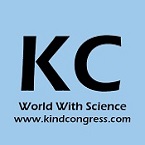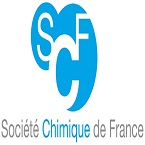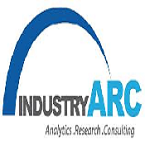Theme:
Dental Research and Health 2023
Dental Research and Health 2023 Frankfurt, Germany Conference invites everyone operating within the field of materials to attend 45th International Conference on Dental Research and Oral Health which is going to be held during September 04-05, 2023 in Frankfurt, Germany. We are welcoming all the Speakers and Delegates from every corner of the World to join us at Dental Research and Health 2023. Dental Research and Health 2023 is going to offer scientific talks by Keynote Speakers, Oral talks, Symposiums, Poster Presentation, Exhibitions and many more.
Dental Research and Health 2023 is an international platform where world-wide professors, researchers, doctors, students are about to share their research work in our conference. The conference is mainly focusing on Endodontics, Denticles, Oral health, , Orthodontics, Prosthodontics, Cavities, Mandibular third molar, Maxillofacial Surgery, dent facial orthopaedics, Tooth Fractures, Oral cancer, Oral Rehabilitation, Bruxism, primary teeth caries.
Conference Agenda includes:
|
Presentations |
Talk duration |
|
Workshops |
45 Minutes |
|
Keynote Speech |
40 Minutes |
|
Plenary Speaker talks |
30 Minutes |
|
Video Presentation |
30 Minutes |
|
Poster Presentations |
30 Minutes |
Track 1: Current concepts in Oral Health
Dentistry continues to change, particularly because of the advances in clinical dentistry, materials and technology. These changes offer opportunities for both patients and Dental practices alike. Now patients can benefit from the advances in Clinical dentistry and dental practices can benefit from the opportunity to move their business in a forward direction. Dental practices need to constantly look at the available options. Dentists can now offer patients advanced choices like Laser dentistry, dentistry, Digital and Implant dentistry. I find that dentists who are taking advanced clinical courses and utilizing technology are re-energized and enjoying dentistry more than ever before.
Track 2: Regulatory and Ethical Issues in Dentistry
Ethics affect virtually every decision made in a dental office, encompassing activities of both judging and choosing. Ethics affect relationships with patients, the public, office staff, and other professionals. Without a solid ethical foundation, you simply cannot be a true professional. The dentist must be aware of patients’ legitimate needs for prescription drugs. There are five fundamental principles that form the foundation of the ADA Code: patient autonomy, no maleficence, beneficence, justice and veracity. Principles can overlap each other as well as compete with each other for priority.
Categories of Ethical Dilemmas
Breaches of confidentiality.
Failure to disclose dental mistakes.
Over treatment and poor quality dental treatment.
Requests for fraudulent documentation.
Requests for narcotic medications.
Requests for inappropriate treatment.
Deceptive dental marketing and advertisements.
Track 3: Dental Hygiene and Oral Health
Dental Hygiene is a method of caring the mouth and teeth clean to prevent Dental problems, most commonly, gingivitis, dental cavities, bad breath and periodontal (gum) diseases. Teeth cleaning mean the removal of dental plaque and tartar from teeth to prevent cavities, gum disease, gingivitis and tooth decay. Poor hygiene of mouth, particularly gum disease increases the risk of heart stroke, uncontrolled diabetes and preterm labour. Vincent infection is a terrible disease of the mouth characterized by gray ulceration of the mucous membrane, bleeding of gums, foul odour to the breath etc.
Track 4: Dental Research and Practice Management
This topic deals with ongoing research in Dentistry that covers an evaluation, diagnosing, treatment and prevention of different kinds of diseases and conditions of the soft and hard tissues of the jaw, oral cavity, maxillofacial area and adjacent and associated structures and its impact on the human body. The major focus of researches is on treating different dental problems through different analytical procedures, tests and techniques.
Track 5: Oral and Maxillofacial Surgery
Oral and Maxillofacial Surgery is the treatment of issues related to hard and soft tissues of face, mouth and jaws. Maxillofacial surgeons set a strong base for cosmetic and restorative dental work which includes placing of dental implants, providing medication for obstructive sleep apnea, facial pain and infection, biopsies, removal of lesions, diagnosis and treatment of some oral cancers. It includes treatment of facial injuries, head and neck cancers, salivary gland diseases, facial disproportion, facial pain, impacted teeth, cysts and tumors of the jaws along with numerous problems affecting the oral mucosa like mouth ulcers and infections.
Track 6: Orthodontics and Dentofacial Orthopaedics
Orthodontics and Dentofacial Orthopaedics is the specialty of dentistry that focuses on the alignment of the teeth and the dental arches: the maxilla and the mandible. This deals with the problems of teeth that are crowded or too far apart, teeth that meet abnormally or don’t meet at all, and teeth that stick out, and mismatched jaws. Orthodontics and dentofacial orthopaedics, is previously called as orthodontia, is a field of dentistry that concerned with the diagnosing, preventing and correction of malpositioned teeth and jaws. For the younger patients, the jaw bones are still forming, it is easier to control bone growth and tooth movement. However for the elder patients this process involves surgery.
Track 7: Periodontics and Preventive Dentistry
Periodontics and Preventive Dentistry focuses mostly on prevention, diagnosing and treating the diseases of gum and its periodontal tissues that results in attachment loss and destruction of alveolar bone. Periodontal treatments includes Tartar (calculus) and plaque removal beneath the gums, Medication and Surgery. Periodontics is first treated by special cleaning called “Peri-odontal cleaning” along with some medications to remove the plaque and tartar deposits. if it doesn’t cured then goes to surgery method which allows dentists to access areas under gums and roots where the tartar and plaque is accumulated. This reduces the pockets and repair caused by progressing disease.
Track 8: Restorative Dentistry and Endodontics
Restorative dentistry deals with diagnosing and managing the diseases of teeth, its supporting structures and the healing of the dentition to practical and inventive requirements of the individual. It encompasses the dental specialities of endodontics, periodontics, prosthodontics and its foundation is based upon how these interact in cases where composite care is needed. The ultimate outcome of dental cavities is resolved by the balance between pathological factors that leads to demineralization and protective factors that leads to remineralization.
Endodontics is the specialty of Dentistry concerned with the diagnosis and treatment of the Dental pulp along with associated periradicular conditions. Endodontic treatment removes the diseased pulp, clean and shape the root canal system, disinfect the contaminated root canals, and then fill the root canal system to block re-infection and stimulate periradicular healing.
Track 9: Preventive & Operative dentistry
Preventive dentistry is the practice of caring for one's teeth to keep them healthy. This helps to avoid cavities, gum disease, enamel wear, and more. Preventive dentistry prevents people from developing dental problems later on. Cavities, gingivitis, enamel loss, and periodontitis can all be avoided or mitigated with proper dental care. Operative dentistry concerned with restoration of parts of the teeth that are defective as a result of disease , trauma, or abnormal development to a state of normal function, health, and esthetics.
Track 10: Prosthodontics and Cosmetic Dentistry
Prosthodontics is one among the nine Dental specialties that is perceived by the American Dental Association (ADA). Dental professionals in the field of prosthodontics (prosthodontists) offer the latest sequencing treatment, maintenance and therapeutic treatment.
Cosmetic Dentistry improves the presence of an individual's teeth, gums and grin. It essentially centers around progress dental feel in shading, position, shape, size, arrangement and in general grin appearance. The medicines can be utilized to fix teeth brightening, full mouth recreation and grin makeover. Corrective medicines incorporate crowns, spans, fillings, dentures, dental inserts, holding, facade and tooth brightening.
Track 11: Digital Dentistry and 3D Imaging (CAD/CAM)
Digital Dentistry denotes to the use of Dental skills or devices to carry out Dental procedures rather than using mechanical or electrical tools. It can be used to make carrying out Dental procedures more efficient than using mechanical tools. 3D Imaging is one of the most major tools for orthodontists to evaluate and record size and form of craniofacial structures. Orthodontists regularly use 2-dimensional (2D) static imaging procedures, but deepness of structures cannot be acquired and restricted with 2D imaging. In 3D diagnostic imaging, a series of anatomical records is gathered using certain technical equipment, processed by a computer and later presented on a 2D monitor to present the illusion of deepness.
Track 12: Geriatric Dentistry, Aging and Palliative Care
Geriatric Dentistry deals with the older adults dental care which involves diagnosing, preventing, managing and treating of problems associated with age related diseases. Different problems include gastrointestinal, renal, cardiovascular, respiratory, and immune systems often decrease in efficiency, and these impacts upon the entire body, including oral health. The common oral changes in the aged people are tooth loss, dental caries, periodontitis, dry mouth and oral cancer. Palliative care comes into play when the patient’s disease is not responding to the treatment. Maintaining proper oral hygiene will be a difficult task for sick and critical condition patients, hence the main goal of dentist in palliative team should focus on oral comfort which comprise maintenance of oral hygiene, wipe out painful conditions like mucositis, infectious diseases, and ulcerative conditions of oral cavity.
Track 13: Nano dentistry, Nanomaterials and Nanotechnology
Nanotechnology has a potential to bring enormous changes in the field of Dentistry. Nanomaterials are those whose size is <10nm.
- Local Nano anaesthesia: A colloidal suspension includes millions of dental nanorobots would be used to induce local anaesthesia. It reduces apprehension and is fast and totally reversible.
- Hypersensitivity cure: Nanorobots uses local organic materials which could result in effective blockage of particular tubules, resulting in rapid and stable treatment.
- Tooth Repositioning: periodontal tissues like the gingiva, periodontal aligament, cementum and alveolar bone, may be directed by orthodontic Nanorobots leads to swift and pain free corrective movements.
- Dentifrobots: Mouthwashes and Tooth pastes contain dentifrobots that would clean all gingival surfaces regularly. They would breakdown all the harmful materials into harmless substances.
- Nanotherapeutics: Nanotechnology will eliminate the solubility problems, lead to a reduction in the dosage of drug and reduce the adverse effects.
- Diagnosing oral cancer: Nanoscale cantilevers, in which elastic beams used to attach with cancer linked molecules
Track 14: Dental Sleep Medicine and Obstructive Sleep Apnea
Dental sleep medicine focuses on the use of oral appliances to treat sleep-disordered breathing, includes snoring and obstructive sleep apnea (OSA). These customized sleep apnea oral appliances are made by dentists using a plastic-like mold according to the specific shape of the patient’s mouth and teeth. They not only work on against the sleep apnea but also effective stop snoring. Sleep apnea is a potentially serious disorder in which breathing starts and stops repeatedly.
Track 15: Dental Anesthesiology and Pain Management
Dental Anaesthesiology we used earlier is nitrogen oxide and ether to control the pain of tooth. This allows millions of patients to undergo painless surgery, but not all. Dental Anaesthesiology includes:
Local Anaesthesia: The most local anaesthesia is lidocaine. Its half-life in the body is about 1.5 to 2hrs. This controls bleeding in the tissue during procedures
Maxillary Anaesthesia: Local anaesthesia is deposited at the buccal (cheek) side of the maxillary alveolus which can diffuse through the thin cortical plate of the maxilla, then further into the pulp of the tooth in order to get dental anaesthesia effect.
Mandibular Anaesthesia: The technique to be used is chosen based on the patient’s age and tooth to be anaesthetised. Regional block or Infiltration technique is used here
Track 16: Current concepts in Oral Health
Dentistry continues to change, particularly because of the advances in clinical dentistry, materials and technology. These changes offer opportunities for both patients and dental practices alike. Now patients can benefit from the advances in Clinical dentistry and dental practices can benefit from the opportunity to move their business in a forward direction. Dental practices need to constantly look at the available options. Dentists can now offer patients advanced choices like Laser dentistry, dentistry, and Digital Implant dentistry. I find that dentists who are taking advanced clinical courses and utilizing technology are re-energized and enjoying dentistry more than ever before.
Track 17: Gerontology and Periodontology
Gerontology is the study of dentition and dental issues in older patients that involves the identification and treatment of dental injuries, diseases, or defects. The physiological, pathologic, and psychological changes in geriatric patients impact dental treatment. Periodontology deals with the study of supporting structures of teeth and connected diseases. The periodontium includes the animal tissue, alveolar bone, and solid body substance, and periodontics ligament. The invention of the microorganism that plays a crucial role in periodontal diseases and also the pathological process of the disease may be an advanced and complex topic.
Track 18: Oral Oncology
Oral cancer is cancer that develops in the mouth or throat tissues. Almost all cancers of the mouth occur in squamous cells, the type of cells that line the mouth, tongue, and lips. These are called squamous cell carcinomas (cancers). Not all tumors in the mouth are cancer. Some are benign and some are precancerous, meaning they may become cancer. Oral cancers are most often discovered after they have spread to the lymph nodes of the neck. Early detection is important for oral cancer survival. Tobacco use is one of the biggest risk factors for oral cancer. This includes smoking cigarettes, cigars, and pipes, as well as chewing tobacco. The survival rate after one year for all stages of oral cancer is 81%. After five years, the survival rate is 56%, and after 10 years it’s 41%. The removal of tumors of large size could possibly affect your abilities associated with the jaw and mouth such as chewing, swallowing, or talking.
Track 19: Pediatric Dentistry and Dental Nursing
Pediatric Dentistry is a sub-branch of dental science that provides initial oral health cares for infants and children till adolescence. During the first 6 months of life, children begin to get their baby teeth. After that, they start to lose their first set of teeth which will be replaced by secondary (permanent) teeth. Without proper dental care, they face oral decays and diseases that can cause complications and pain. Early childhood dental caries is 10 times more common than other diseases.
The critical part that dental practitioners, dental hygienists, researchers, and other well-being experts of dental occasions will prompt the sheltered and powerful ailment anticipation measures to exist that everybody can embrace to enhance oral well-being and avert sickness. Oral issues, including dental and periodontal contaminations, dry mouth, and tooth rot, are for the most part treatable with legitimate findings and care.
Track 20: Innovations in Dentistry
Increased interest in dental health associated with new products and new players in the dental market constantly lead to tackling dental health with more speed and precision. Over the last decade, the dental industry has experienced a massive influx of new technologies. The advances in the dental stream have resulted in a streamlined workflow, restorative dentistry accuracy as well as elevated product consistency. By developing new practice models these technologies will continue to advance and require adaptation that enables "mission critical" technologies to remain affordable.
Track 21: Dental Instruments and Dental Marketing
Dental Instruments are the equipment that is used to fix dental problems and injuries. There is a wide range of dental instruments which are employed for the repair and fixture of the teeth. Dental marketing can be defined as the branch of dentistry that deals with the marketing of the various dental instruments and equipment which are used to repair dental injuries. Dental marketing includes the various groups of people who are involved in the manufacture of dental instruments and dentists who run a clinic.
Track 22: Oral and Maxillofacial Surgery
Oral and maxillofacial surgery is the specialty of dentistry, which includes revising an extensive variety of wounds, ailments, and deformities in the head, face, neck, and tissues in the oral and maxillofacial area. It encompasses the diagnosis and treatment of diseases, traumatic injuries, and deformities of the face, mouth, dentition, jaws, and neck. It also includes the diagnosis and surgical treatment of diseases, injuries, and defects of tissues (both hard and soft) of the oral and maxillofacial region. It is a bridge between medicine and dentistry, treating conditions that require expertise from both backgrounds such as head and neck cancers, early dental implant failure, antibiotic prophylaxis, salivary gland diseases, facial disproportion, facial pain, and cysts and tumors of the jaws and infections. It provides the highest standard of surgical care for patients with benign and malignant tumors of the head and neck region, the trauma of the oral and maxillofacial region, basic oral surgical procedures including removal of wisdom teeth and the placement of implants, and dentofacial and cleft deformities.
Track 23: Dental Biomaterials
Dental biomaterials are specialized instruments that are designed to be used in dentistry. These are fabricated structures. Their main focus is the replacement and enhancement of missing tissues due to some disease or accidents and also to restore their normal function. Dental biomaterials professionals study the structure, properties, and processing of these materials and the interaction of these materials with the face and mouth tissues. It is principally involved in restorative dentistry, prosthodontics, pedodontics, and orthodontics. The dental materials are designed with the key components of every dental procedure. The use of these materials depends largely the on the type of practice operated. New dental materials are introduced in the market at a rapid pace, so staying on top of our options is an ongoing part of practicing dentistry.
Dental Research and Health Care Market is expected to reach $16.92 Billion by 2029 from $11.81 Billion in 2021 at a CAGR of 4.6 %. Dental Health Care is a field of medicine that deals with the medical treatment of infants, children, and adolescents. Region/country wise Dental market report is available at Dental Research and Health 2023
Oral surgeons specialists (oral surgeons, endodontists, orthodontists, periodontitis, and pediatric dentists), oral surgeons are consistently the highest earning oral surgeons specialists while periodontitis are the lowest earning oral surgeons specialists. Among the five specialist types studied in this brief, orthodontists have the lowest self-reported busyness levels while oral surgeons have the highest self-reported busyness levels. Among the five specialist types studied in this brief, a greater percentage of pediatric dentists work in oral surgeon’s service organization (DSO) affiliated practices while a lower percentage of periodontists work in DSO affiliated practices
Oral and maxillofacial pathology getting to be distinctly essential to all the world oral surgeons’ specialists. Oral and maxillofacial surgery is considered as private segment treatment in Italy, as just 4% of oral surgeons care is given inside the NHS. As indicated by a recent report (Servizio Studi ANDI) in view of ISTAT information, 39.7% Italians went to a oral surgeons specialist at any rate once per year, contrasted with 11.5% who never went by. Private oral surgeons’ consumption was evaluated in 2013 to be about €10 billion. It has been assessed that Oral surgeon’s administrations in Italy are given through a system of 56,000 oral surgeons’ practitioners and business research centers are dynamic, with 11,520 oral surgeons’ professionals working either as proprietors or representatives. In Italy, most oral surgeons’ practitioners who hone all alone or as little gatherings, outside healing centers or schools, and give an expansive scope of general medications are said to be in "Private Practice”. It additionally gives the opportunity to analysts, experts and instructors to introduce and talk about the latest advancements, patterns, and concerns, reasonable difficulties encountered and the solutions adopted in the fields of Oral Health & Maxillofacial Surgery.
Market Scenario:
The ADTA report clearly suggests that staff shifts and changes will force the design and construction of new practice/organizational models that have "insurgent" staffing concepts and dynamic cultures — if the dentist is willing to embrace the full spectrum of provider choices! With the rapid technological advancement, wide range of Oral and Maxillofacial Pathology techniques, and increase in the need of pathology automation. The oral pathology global market is expected to have a healthy growth rate in the forecast period (2012-2025).Oral health is essential to general health and quality of life. From past few years, the oral surgeons market is relatively stable, with substantial growth in restorative CADCAM dentistry. National oral surgeons care expenditures were $113.5 billion in 2014, somewhat up from $112 billion in 2013(in inflation-adjusted 2014 dollars) but roughly considered the same level .The global oral care/oral hygiene market is projected to reach USD 53.97 Billion by 2022 from USD 43.31 Billion in 2017, at a CAGR of 4.5%. The major players in the global oral care market are Colgate-Palmolive Company (U.S.), The Procter & Gamble Company (U.S.), Unilever plc (U.K.), Glaxosmithkline plc (U.K.), GC Corporation (Japan), Koninklijke Philips N.V. (Netherlands), Johnson & Johnson (U.S.), Lion Corporation (Japan), 3M Company (U.S.), Dr. Fresh LLC. (U.S.), Ivoclar Vivadent AG (Germany), Henkel KgaA (Germany), Jordan AS (Denmark), Panasonic Corporation (Japan), Sunstar Suisse S.A. (Switzerland), Church & Dwight Co., Inc. (U.S.), Dentaid (U.S.), Kao Corporation (Japan), LG Household & Health Care Ltd. (Japan), Dabur India Ltd. (India), Himalaya (India), Patanjali Ayurved Ltd. (India), Supersmile (U.S.) Ranir, LLC. (U.S.), Young Innovations, Inc. (U.S.), and Ultradent Products, Inc. (U.S.).
Based upon the ADTA's study, six variables seem to determine provider productivity, quality, and economics — all of which influence a practice's sustainability. These variables range from strategic to operational:
- Range of services
- Scope of capacity
- Staffing mix/format
- Access/convenience
- Capital resources
- Fee and expense mix
The oral and maxillofacial pathology consumables market is expected to witness significant growth in the coming years. Factors such as the rapid rise in geriatric population, growing tourism in emerging markets, rising incidences of dental caries and other periodontal diseases, growing disposable incomes (resulting in increased willingness to spend out-of-pocket), rising demand for cosmetic dentistry, and increasing dental care expenditure are the major factors driving the growth of the global dental consumables market. The global dental consumables market is projected to reach USD 35.35 Billion by 2021 from USD 25.45 Billion in 2016, at a CAGR of 6.8% from 2016 to 2021. However the high cost and limited reimbursement for dental care and shortage of dental professionals are expected to restrain the growth of this market to certain extent.
Today, the most common practice model in oral surgeons care is the standard solo practice with three-plus operators’ and a lean clinical-support staff. The smaller general-practice model generates roughly $225,000 to $300,000 in gross billings. Gross for the larger general practice ranges from $475,000 to $550,000. Mid-range operations gross between $350,000 and $425,000. General expenses in this traditional model typically run from a low of 50 to 55 percent to a high of 65 to 70 percent. The norm is 60 to 65 percent.
Canada: The Dentists business displayed slight development over the five years to 2017 because of increments in persistent appearances and private area spending on dental administrations. As dental workplaces get expanded financing through the private division, industry administrators depend on less on open protection repayments, profiting industry income. With per capita extra cash developing amid the period, dental practices have needed to secure fewer repayments from medical coverage suppliers contrasted and the general medicinal services area. Over the five years to 2022, the expanding elderly populace will change socioeconomics in Canada and, subsequently, goad interest for helpful, corrective, periodontal and orthodontic care, boosting industry income.
USA: The U.S. Oral surgeons Practice industry has proven to be quite resilient throughout the economic recession, having registered positive revenue growth each year from 2002 to 2010. In 2010, U.S. oral surgeons practices recorded a collective $107.6 billion in revenue, up 1.8 percent from the prior year, driven primarily by continued favourable demographic trends, improvements in technology, and heightened consumer awareness of the importance of oral hygiene to overall health. Industry revenue is forecast to reach $130.0 billion by 2016, representing a compound annual growth rate (CAGR) of 3.2 percent from 2010 to 2016. The market for oral pathology is growing steadily. It is expected to reach approximately USD 22 billion by the end of 2022.
Europe: Europe is likely to be the largest market for oral surgeons laboratories in terms of revenue during the forecast period. However, Asia Pacific is anticipated to outperform Europe from 2015 to 2023. The European oral surgeons equipment market was estimated at USD 1.6 billion in 2014 and is projected to reach USD 2.40 billion by 2020 at a CAGR of 7 % during the forecast period from 2014 to 2022.
Asia Pacific: Asia-Pacific oral surgeons equipment market was estimated at USD 2.4 billion in 2016 and is projected to reach USD 3.8 billion by 2021 at a CAGR of 9 % during the forecast period from 2016 to 2022.
Dental Research and Health 2022
44th International Conference on Dental Research and Oral Health organized by Conference Series LLC Ltd during November 07-08, 2022 and was based on the Theme- Exploring the possibilities in shaping the Future of Dental Health and Oral Health
On behalf of our Organizing Committee, we would like to extend our appreciation for continued support and active participation of the Organizing Committee Member, Keynote Speakers and our Moderators for the successful completion of the Dental Research and Health 2022. Talking about numerous important issues will give you more time to think about and discuss the core of today's scientific and technological advancement.
Dental Research and Health 2022 was started by the opening ceremony which was followed by the Keynote speech and we are overwhelmed with their presence and generous response.
The Conference series are unparalleled and a must-seize opportunity to immerse oneself in the cutting-edge information and communication technology. By equating the speed of science, technology, and business domains, Conference Series. International Engineering Conventions offers greater comprehension about the technological and scientific achievements around the world. We would like to convey our sincere gratitude to all the supporters from Editorial Board Members of our Open Access Journals, Keynote Speakers, Honourable guests, Valuable Speakers, Students, delegates and special thank s to Media Partners for their promotions to make this event a successful one.
With the unique feedbacks from the Conference Dental Research and Health 2022, we would like to announce the commencement of the 45th International Conference on Dental Research and Oral Health which is going to be held on September 04-05, 2023 Frankfurt, Germany.
Let us meet again @ Dental Research and Health 2023
Conference Highlights
- Current concepts in Oral Health
- Regulatory and Ethical Issues in Dentistry
- Dental Hygiene and Oral Health
- Dental Research and Practice Management
- Oral and Maxillofacial Surgery
- Orthodontics and Dentofacial Orthopaedics
- Periodontics and Preventive Dentistry
- Restorative Dentistry and Endodontics
- Preventive & Operative dentistry
- Prosthodontics and Cosmetic Dentistry
- Digital Dentistry and 3D Imaging (CAD/CAM)
- Geriatric Dentistry, Aging and Palliative Care
- Nano dentistry, Nano materials and Nanotechnology
- Dental Sleep Medicine and Obstructive Sleep Apnea
- Dental Anesthesiology and Pain Management
- Current concepts in Oral Health
- Gerontology and Periodontology
- Oral Oncology
- Pediatric Dentistry and Dental Nursing
- Innovations in Dentistry
- Dental Instruments and Dental Marketing
- Oral and Maxillofacial Surgery
- Dental Biomaterials
To share your views and research, please click here to register for the Conference.
To Collaborate Scientific Professionals around the World
| Conference Date | September 04-05, 2023 | ||
| Sponsors & Exhibitors |
|
||
| Speaker Opportunity Closed | Day 1 | ||
| Poster Opportunity Closed | Click Here to View | ||
Useful Links
Special Issues
All accepted abstracts will be published in respective Our International Journals.
Abstracts will be provided with Digital Object Identifier by










